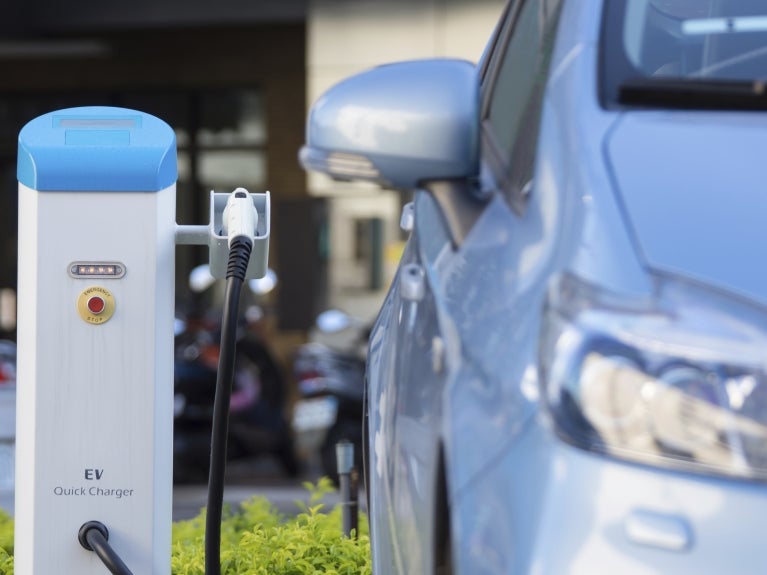CAISO Releases Ambitious 2023-2024 Transmission Plan To Address State’s Climate Goals

California Independent System Operator (CAISO) released its draft 2023-2024 Transmission Plan (the 2023-2024 Plan) on April 1, 2024.
As expected, the 2023-2024 Plan incorporates projections for significant new generation of renewable energy and plans for major new transmission projects to carry the additional energy. In total, the 2023-2024 Plan identifies 26 new transmission projects, estimated at a cost of $6.1 billion. The 2023-2024 Plan prioritizes offshore wind for the state's energy transition, with a substantial amount of the proposed transmission upgrades correlating with the offshore wind generation potential off the North Coast. The 2023-2024 Plan should catalyze investment in both new transmission and new generation within transmission priority areas.
Background
CAISO manages most of the high-voltage, long-distance power lines that comprise the backbone of California's electrical transmission grid. As part of that function, CAISO performs annual transmission planning to ensure that sufficient transmission capacity exists to carry power into and within the state. CAISO identifies the need for transmission projects based on three categories: reliability, public policy, and economic necessity. Transmission plans, after approval by CAISO's board of governors in May of a given year, serve as the basis for developers to bid on the need for regional transmission facilities as part of a competitive solicitation procedure.
California's climate goals play a substantial role in CAISO's transmission planning process. Chief among state policies is SB 100, which updated the state's renewable portfolio standard to ensure that at least 60% of California's power is derived from renewable sources by 2030 and set a goal of 100% renewable sources for all retail electricity by 2045. To achieve these milestones, in 2022, the California Public Utilities Commission (CPUC), the California Energy Commission (CEC), and CAISO executed a memorandum of understanding to better reconcile processes for transmission planning and siting and permitting for new generation sources, with priority given to projects within identified transmission zones.[1] Year over year, the trendline in transmission plans shows that CAISO, CPUC, and CEC are working toward development of substantial new sources of renewable energy and the transmission projects to accommodate the new generation.
Rapid Escalation in Renewables Growth and New Transmission Projects Needs
CAISO's latest plan incorporates CPUC data to project that California will need to add an average of 7,000 megawatts (MW) of generating capacity annually during the 10-year planning forecast. To put this into perspective, the 2020-2021 transmission plan forecasted approximately 1,000 MW total over its 10-year horizon. While SB 100 is driving the push to develop new sources of renewable power, CAISO also references increasing demand due to electrification of certain industries (including transportation), challenges in accessing imported power from neighboring balancing authorities, and the retirement of gas-fired plans as factors in its projections.[2]
To accommodate these new renewable generation projects, CAISO identifies the need for 26 new transmission projects within various transmission planning zones. The transmission planning zones, which are key to identifying priority interconnection areas, are identified below in Figure ES-2. These include reliability-driven and policy-driven projects.[3]

- Reliability-driven projects. These projects are needed to address load growth and evolving grid conditions. Fourteen of the reliability-driven projects are within Pacific Gas and Electric Company's (PG&E) service territory, four are in SCE's territory, and one is in San Diego Gas & Electric's (SDG&E) territory.[4]
- Policy-driven projects. Policy-driven projects are necessary to meet policy goals independent of load growth or grid conditions. CAISO identifies seven policy-driven projects, which collectively will require more than $4.5 billion in investment. The two most significant projects in the plan are in this category. They include a new 500 kilovolt (kV) substation in Humboldt with an approximately 260-mile-long high-voltage direct current (HVDC) line (to be initially operated as 500kv AC) to interconnect the Humboldt substation with a new substation planned in Collinsville (Solano County), and an approximately 140-mile long 500 kv AC line to interconnect the new Humboldt substation to the Fern Road substation in Shasta County.[5] These two projects are eligible for competitive solicitation through CAISO's tariff. CAISO is expected to provide a schedule for the competitive solicitation process in May 2024.[6]
Offshore Wind Is a Key Driver of CAISO's Transmission Planning
While the 2023-2024 Plan identifies various sources of renewables, including distributed solar, onshore wind, geothermal, battery storage, and imported power, offshore wind underlies projections for the plan's most significant projects. CAISO notes that "significant amounts of new offshore wind generating capacity and the associated transmission upgrades are required to cost-effectively bring reliable decarbonized power to California consumers and industry across all seasons of the year."[7] The 2023-2024 Plan evaluates transmission needs for 13.4 GW of power generated from offshore wind sources spread across the Central Coast and North Coast.[8] The major upgrades described above are focused on the Humboldt area given that CAISO projects the North Coast offshore projects will generate more than 8 GW of power, and the area currently lacks a bulk substation and associated transmission.
Key Takeaways
- The 2023-2024 Plan aligns with the state's lofty climate goals. SB 100 (and SB 350 before it) challenged the state to significantly modify the electrical grid to meet climate goals. The 2023-2024 Plan is aggressive, because it must be if the state is to come anywhere near the goal of 60% renewable power by 2030 and 100% renewable power by 2045.
- Offshore wind is essential for the state to meet its renewables goals. As CAISO notes, offshore wind is critical to cost-effectively deliver energy from renewable sources throughout the year.[9] Major transmission upgrades are needed to capitalize on this resource.
- An eye toward competitive solicitation procedures. Transmission developers will need to stay tuned for CAISO's release of schedules and related information for the two competitive projects.
- Transmission planning zones should be reviewed in detail. Developers will need to review final approved transmission planning zones to identify opportunities subject to interconnection priority.
Endnotes
[1] See https://www.caiso.com/Documents/ISO-CEC-and-CPUC-Memorandum-of-Understanding-Dec-2022.pdf.
[3] Note that while CAISO evaluates economic-driven projects as part of transmission planning, the 2023-2024 Plan did not identify any economic-driven projects for the planning cycle. (See 2023-2024 Plan, § 4.9.).
[4] 2023-2024 Plan, Table ES-1 (Reliability-Driven Projects Recommended for Approval).
[7] 2023-2024 Plan, Executive Summary.
[9] 2023-2024 Plan, Executive Summary ("[S]ignificant amounts of new offshore wind generating capacity and the associated transmission upgrades are required to cost-effectively bring reliable decarbonized power to California consumers and industry across all seasons of the year.").
© 2024 Perkins Coie LLP



